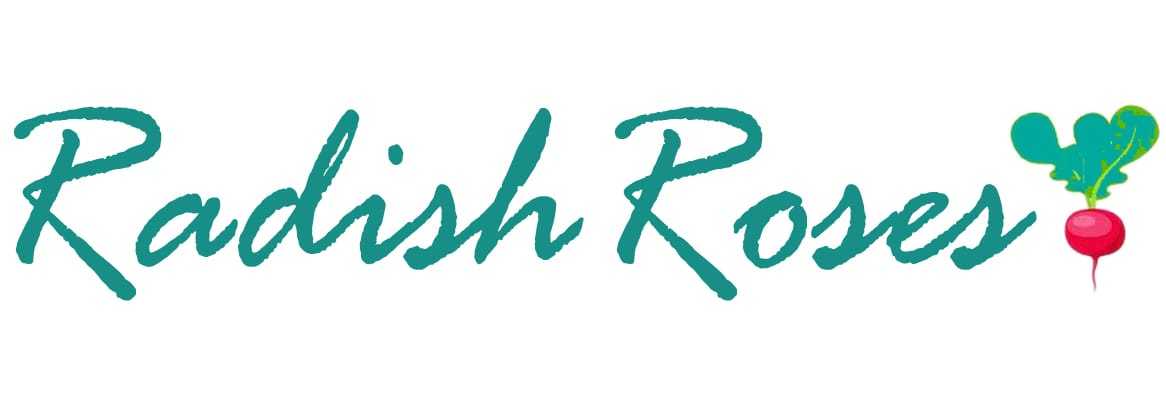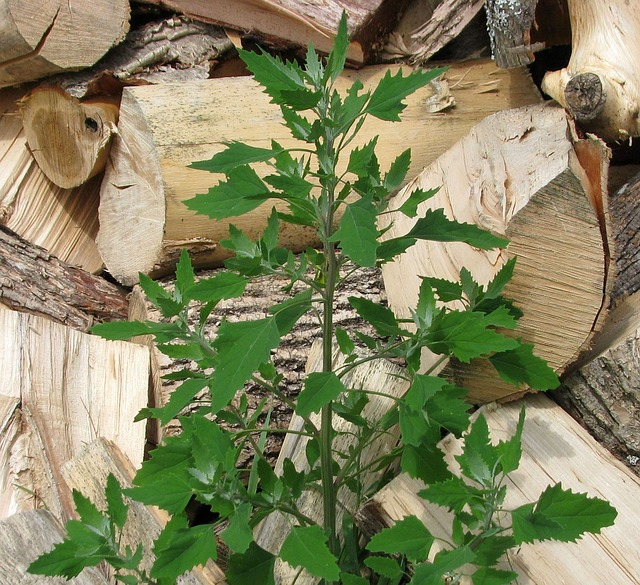Did you know that a highly nutritious and versatile wild green might be growing right in your backyard? Lamb's quarters (chenopodium album), also known as "wild spinach" or "fat hen", is an edible weed that offers an abundance of vitamins, minerals, and omega fatty acids. In this blog post, we will explore everything you need to know about this amazing plant, from identification and harvesting to cooking techniques and delicious recipes. Get ready to discover the world of lamb's quarters and elevate your culinary skills with this versatile wild wonder!
Key Takeaways
- Lamb's quarters (chenopodium album) is a wild plant easily identified by its light green, waxy-coated leaves and small greenish flowers.
- It has numerous nutritional benefits but, like spinach, should be consumed in moderation due to potential risks associated with oxalic acid content.
- Various culinary uses include sautéing, steaming, or adding to recipes such as soups and omelettes. It can be dried or frozen for delicious meals year round!
Characteristics of Lambs Quarters
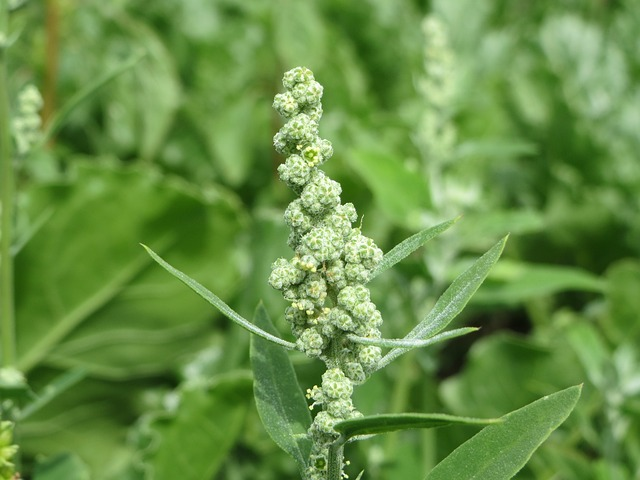
Lamb's quarters (Chenopodium album) is a wild plant that can be easily identified by its distinctive features. One of the most striking characteristics of lamb's quarters is the white powdery coating, known as ‘bloom’ or ‘epicuticular wax,’ on its leaves, which is actually a waxy substance that provides protection from environmental elements. The plant’s leaves, diamond-shaped with a pointed tip and a rounded base, and can measure up to 10 centimeters (cm) long.
Green Flowers in Clusters
Lamb's quarters’ flower buds, small with a greenish hue, densely group into small, thick, granular clusters along the main stem and upper branches, distinguishing them from other plants.
These flowers typically bloom from June to August and produce seeds, adding to the versatile uses of this nutritious plant.
Growth and Habitat
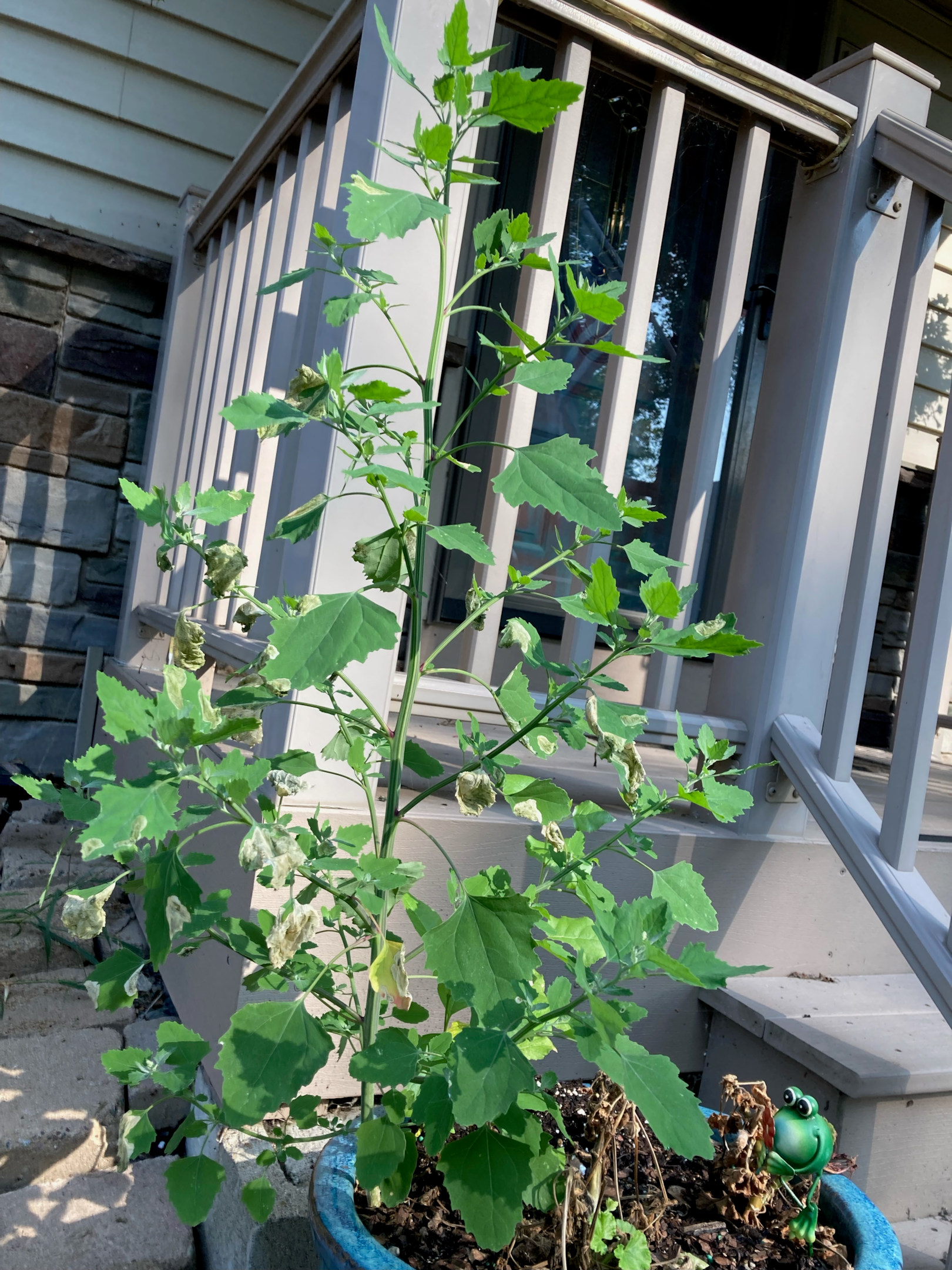
Lamb's quarters can be found in various locations, such as:
- gardens
- close to streams, rivers
- forest clearings
- fields
- waste places
- soils that have been disturbed
This hardy plant is known for its ability to restore essential nutrients to depleted soil, making it beneficial for the environment and a great example of native plants.
Harvesting Lambs Quarters
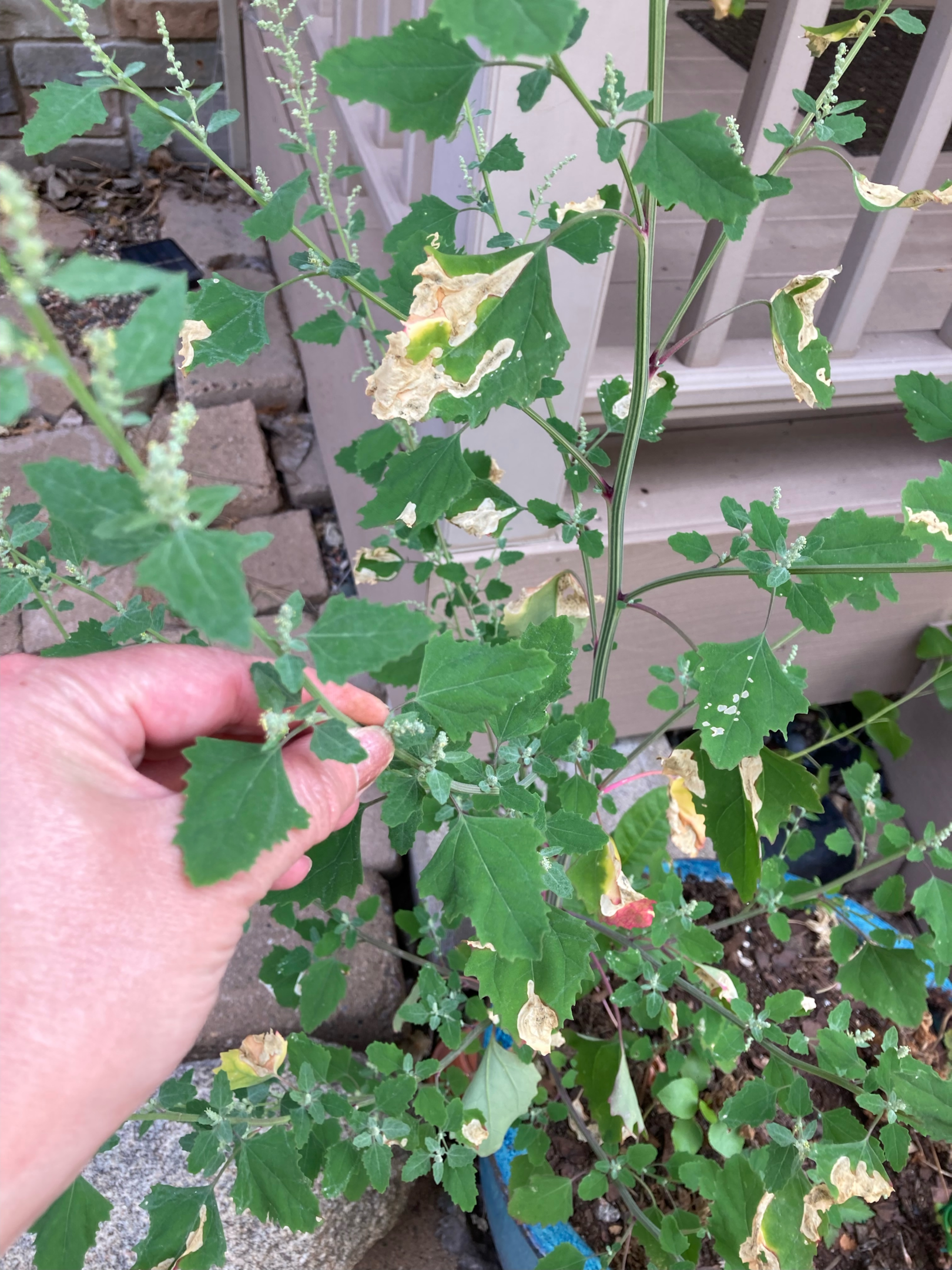
The tender tips – the top few nodes – are the most suitable portions of the plant to focus on when harvesting lamb's quarters. The leaves can be stored for a maximum of two days, so it’s essential to wash and store them properly. To clean and crisp up harvested lamb's quarters, fill a sink with cool water, pick them into bite-size clusters, and refresh them in the water, swishing them around for a few minutes.
Selecting young plants that have not yet developed seed heads will ensure that you’re getting the most tender and flavorful greens for your culinary creations.
Nutritional Benefits and Considerations
Rich in vitamins, minerals, and omega fatty acids, lamb's quarters is a nutrient powerhouse, and is a great source of:
- Fiber
- Protein
- Vitamins A and C
- Manganese
- Calcium
- Copper
- Iron (in small amounts)
- Omega-3 and omega-6 fatty acids
The seeds of lamb's quarters contain saponins, which are naturally occurring, bitter-tasting compounds that are widely distributed in cells of legume plants. Saponins are beneficial for humans and other warm-blooded mammals for lowering cholesterol. They are generally toxic to reptiles, fish, and other cold-blooded animals. Saponins can rarely be a gastrointestinal (GI) irritant, increasing symptoms of gastro-esophageal reflux disease (GERD), especially in obese people.
Although it offers numerous health benefits, it's important to be aware of the potential risks associated with consuming lamb’s quarters. This plant is high in oxalates, which are molecules found in many cultivated and wild greens. High quantities of oxalates or oxalic acid can reduce mineral uptake and increase the risk of kidney stone formation.
To avoid these risks, it is advised to:
- Consume saponins in the seeds in moderation, if you experience GI irritation
- Not eat large quantities of raw lamb’s quarters due to its oxalic acid content
- Steaming or sautéeing to reduce oxalic acid consumption
Eating lamb’s quarters in moderation when eaten raw is also recommended.
Despite these considerations, lamb's quarters remains a highly nutritious and versatile food source. When consumed in moderation and prepared correctly, it can be a delicious and healthful addition to your diet.
Preparing and Cooking Lambs Quarters
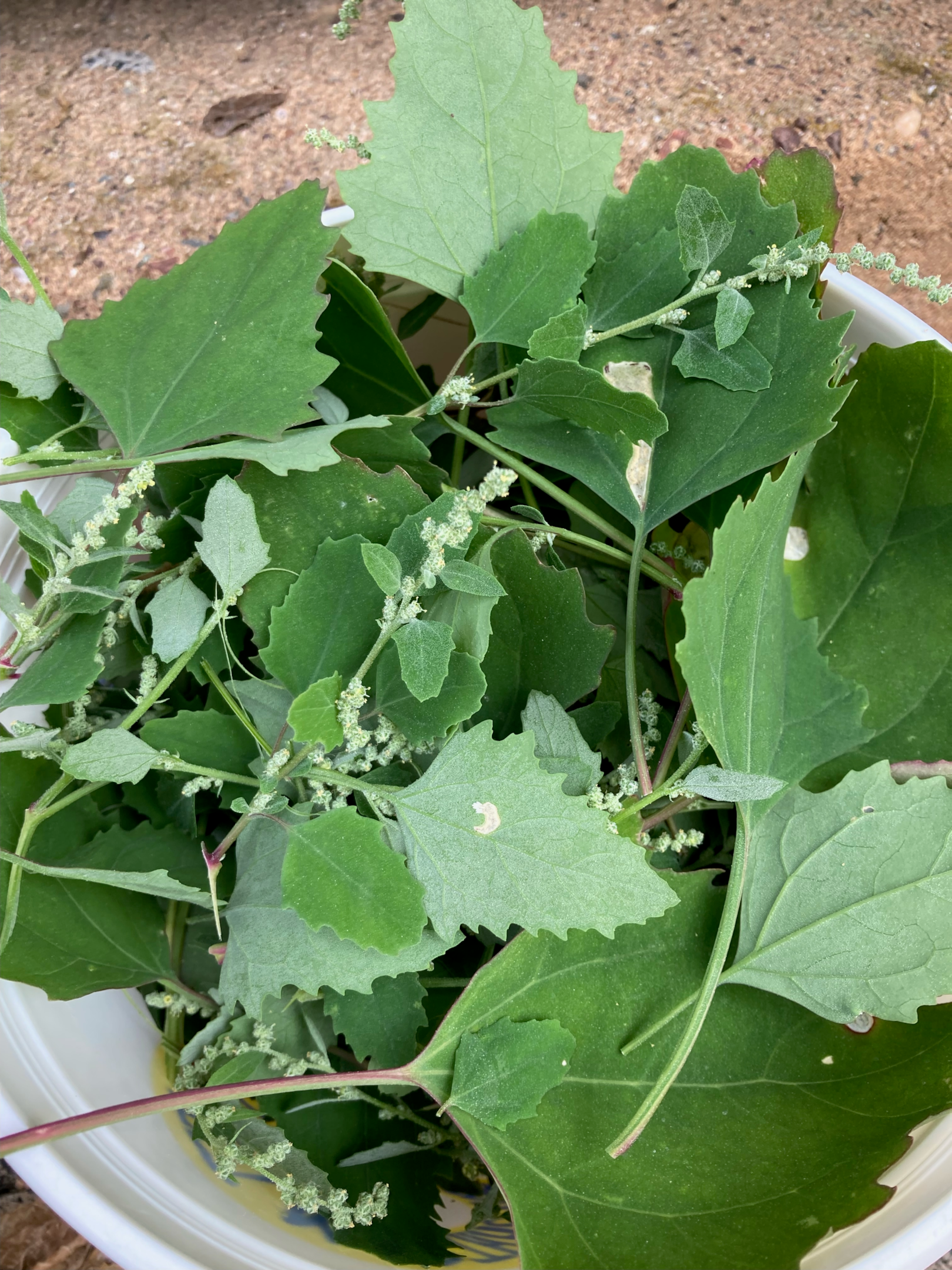
There are numerous ways to enjoy lambs quarters in your meals, such as:
- Steaming
- Adding to soups and sautés
- Drying
- Blanching
- Freezing
- Using as a spinach substitute in recipes
The stems of lambs quarters offer a pleasingly crunchy texture, providing an enjoyable source of roughage and fiber. Various cooking techniques can be employed to prepare lambs quarters, such as steaming, adding to soups and sautés, drying, blanching, or freezing.
When cooking lambs quarters, it’s important to gather approximately three times the desired volume of leaves, as they will shrink significantly during the cooking process. The leaves can be prepared in various ways, such as:
- sautéing them with garlic and olive oil
- adding them to soups or stews
- steaming them and serving as a side dish
- incorporating them into omelettes or frittatas
It's also called "wild spinach", and you can pretty much use it the same way you would use spinach!
Preserving Lambs Quarters
Freezing them, making pesto, or creating kimchi are methods to preserve lambs quarters for future use. For optimal freezing results, follow these steps:
- Cook the leaves in salted water until they are lightly wilted.
- Shock them in an ice bath and squeeze out the liquid.
- Place the prepared leaves in labeled, dated resealable bags and freeze them.
Experiment with different preservation techniques to find your favorite way to enjoy lambs quarters all year round.
Similar Plants and How to Distinguish Them
Lamb’s quarter shares similarities with other plants like spinach, Swiss chard, amaranth, purslane, and dandelion greens. To accurately identify lamb’s quarter among these similar plants, including lamb’s quarters, look for the white powdery coating on the leaves, diamond-shaped leaves, and green flowers in clusters.
Familiarizing yourself with the unique characteristics of lambs quarters and similar plants allows you to confidently harvest wild plants, such as this nutritious wild green, and enjoy them in your meals.
Delicious Recipes Featuring Lambs Quarters

Whether you prefer boiling, steaming, sautéing, roasting, or baking, there’s a delicious lambs quarters recipe for everyone.
There are many fun and delicious recipes on the internet that use lamb's quarters.
Create a wild greens pâté using lamb quarters and other wild greens, such as amaranth and purslane. This flavorful dish can be enjoyed as a dip, tossed over veggies and pasta, or as a base for a green or white pizza.
If you are stumped, just find your favorite spinach recipe and substitute the lamb's quarters.
Here are a few of my favorite lamb's quarters recipes:
Wild Spinach Dip
Ingredients:
2 Cups fresh lamb's quarters (wild spinach), rinsed
1 tsp chopped fresh dill, chopped
1 tsp fresh garlic, minced
1/4 cup fresh grated parmesan
1 tsp lemon zest
1 Tbsp fresh lemon juice
2 Cups (16 ounces) plain greek yogurt
Salt and pepper to taste
Directions:
Bring a large pot of water to a boil. Steam the lamb's quarters over the pot of boiling water using a wire strainer or steamer basket, until tender. Allow to cool. Combine all ingredients in a bowl and chill for 30 minutes or more before serving with cut vegetables or pita chips. You may also try serving it warmed, with sliced, toasted baguette.
Sautéed Lamb's Quarters
Ingredients:
4-6 Cups fresh lamb's quarters, washed
1 Tbsp olive oil
1 Tbsp butter
3 cloves garlic, minced
1/4 Cup grated fresh parmesan
1 1/2 Tbsp lemon juice
Salt and Pepper to taste
Directions:
In a large skillet, heat the olive oil, add garlic and sauté until fragrant. Add the lamb's quarters and butter and sauté until the leaves become tender, stirring frequently. Add lemon juice. Remove from heat and add the parmesan and salt and pepper to taste.
Recipe Variations:
Mix with cooked pasta and alfredo sauce for a delicious "wild spinach" Alfredo
Toss with cooked spaghetti squash
Add 1 Cup of sliced mushrooms and/or halved cherry tomatoes when you add the garlic
Add 3/4 Cup cooked, chopped bacon with the parmesan
Add 2 Tbsp soy sauce with the olive oil and toss the finished product with fried rice or noodles
Wild Greens Salad
Ingredients:
4-6 cups washed lamb's quarters, tender dandelion greens, purslane, and/or plantain (you may supplement as needed with romaine or other leaf lettuce)
1 Cup cherry or grape tomatoes, halved
1/2 cup sliced olives
1/2 medium onion, sliced
1/2 Cup parmesan
Italian or raspberry vinaigrette dressing to taste
Directions:
Toss greens in a large bowl with all ingredients and serve chilled. You may choose to leave out the dressing and serve on the side, if preferred.
Don’t be afraid to get creative in the kitchen and try new recipes that highlight the unique flavor and texture of this nutritious wild plant.
Summary
Throughout this blog post, we’ve explored the fascinating world of lamb's quarters, from its distinctive features and growth habits to its nutritional benefits and culinary versatility. By learning how to identify, harvest, and prepare this nutritious green, you can add a new dimension to your cooking and enjoy the many health benefits it offers.
Frequently Asked Questions
What are some ways to cook lamb's quarters?
Lamb quarters can be eaten raw or cooked in a variety of ways, including sautéing, steaming, wilting, and as a spinach substitute in recipes.
How can I preserve lamb's quarters?
Preserve lamb's quarter by freezing, making pesto, or creating kimchi for an easy and delicious way to enjoy them.
Frozen lambs quarter can be used in soups, stews, and stir-fries. Pesto can be used as a spread on sandwiches or as a topping for pasta. Kimchi can be served as a meal.
What potential risks are associated with consuming lamb's quarters?
Similar to spinach, and other greens eating large amounts of raw lamb’s quarters can result in increased consumption of oxalic acid, which can cause health problens such as an increase in kidney stones.
It is important to be aware of the potential risks associated with consuming large amounts of raw lamb’s quarters. Cooking lamb’s quarters is a much safer option.
What are some similar plants to lamb's quarters, and how can I distinguish them?
Lambs quarter, or chenopodium album can be easily distinguished from its similar-looking plant relatives, such as spinach, Swiss chard, amaranth family, purslane, and dandelion greens, by its white powdery coating, diamond-shaped leaves, and green flowers in clusters.
With a better understanding of lamb's quarters and its potential uses, you can now confidently incorporate this delicious and healthful wild green into your meals. So why not head out to your farmer's market, backyard or local park and start exploring the world of lamb's quarters today?
